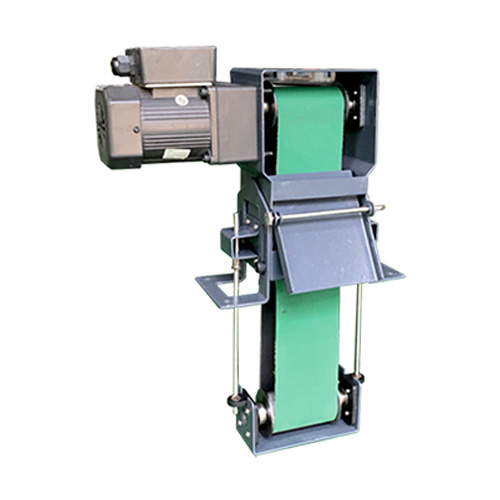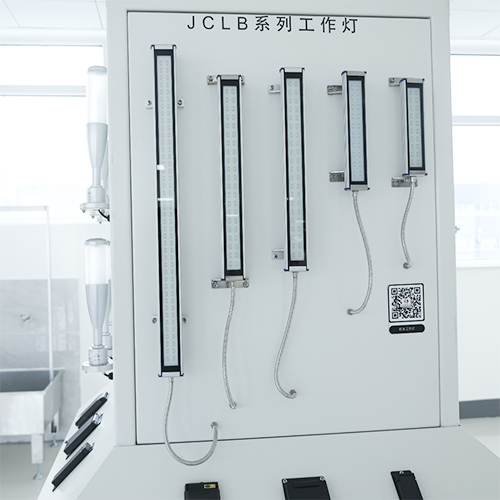-
WhatsAPP: +86 18706448138
-
Tengzhou, Shandong, China

Selecting The Pulse Generator: A Buyer’s Guide
We’ll explore key considerations and features to help you make an informed decision when selecting the pulse generator for your applications.
Table of Contents
Introduction

The pulse generator is a critical component in numerous industries, from CNC machining to telecommunications and scientific research. At Shansen, a leading developer and manufacturer of electrical components for CNC machine tools since 2001, we understand the importance of selecting the right pulse generator for your specific needs. This versatile device generates precise electrical pulses to control machinery, test circuits, or drive complex systems. Choosing the right pulse generator can significantly impact performance, efficiency, and reliability. In this comprehensive buyer’s guide, we’ll explore key considerations, features, and specifications to help you make an informed decision when selecting the pulse generator for your applications.
Understanding The Pulse Generator’s Role
The pulse generator serves as the heartbeat of many systems, delivering controlled electrical signals to initiate or synchronize operations. In CNC machining, for instance, it ensures precise movement of tools, enabling high-quality production. At Shansen, our pulse generators are designed to meet the rigorous demands of modern manufacturing, offering accuracy and durability. Whether you’re working in automation, testing, or research, understanding the pulse generator’s role in your setup is the first step toward selecting the ideal model.
Why Precision Matters in Pulse Generation
Precision is paramount when selecting the pulse generator. Even minor deviations in pulse width, frequency, or amplitude can lead to errors in CNC operations or unreliable test results. A high-quality pulse generator ensures consistent performance, reducing downtime and improving output quality. Shansen’s expertise, built over two decades, ensures our pulse generators deliver the precision required for demanding applications.
Applications of The Pulse Generator
The pulse generator finds use in diverse fields. In CNC machining, it controls stepper motors and servo systems, ensuring accurate tool positioning. In telecommunications, it tests signal integrity, while in research, it drives experiments requiring precise timing. Understanding your application’s specific needs—whether it’s high-frequency pulses for testing or low-frequency signals for motor control—will guide your selection process.
Key Features to Look for in The Pulse Generator


When evaluating the pulse generator, several features should influence your decision. These include pulse width control, frequency range, amplitude adjustability, and ease of integration. Shansen’s pulse generators, for example, offer customizable settings to suit various CNC applications, ensuring compatibility with existing systems.
Frequency Range and Adjustability
The frequency range of the pulse generator determines its versatility. Some applications require high-frequency pulses (up to MHz or GHz), while others need slower, more stable signals. Adjustable frequency settings allow you to tailor the pulse generator to your specific needs, making it a flexible choice for dynamic environments.
Pulse Width and Duty Cycle
Pulse width and duty cycle control are critical for applications requiring specific signal patterns. A pulse generator with fine-tuned width adjustments ensures precise timing, which is essential for CNC machining tasks like cutting or drilling. Shansen’s pulse generators provide granular control, allowing users to optimize performance.
Output Signal Types
The pulse generator should support multiple signal types, such as square waves, TTL, or CMOS, to match your system’s requirements. Compatibility with different output formats enhances flexibility, especially in mixed-signal environments. At Shansen, our devices are engineered to support a wide range of signal types, ensuring seamless integration.
Comparing Pulse Generator Specifications
To help you evaluate the pulse generator, we’ve compiled a table of key specifications to consider. This table outlines common parameters and their significance, helping you align your choice with your application’s needs.
| Specification | Description | Importance |
|---|---|---|
| Frequency Range | Range of pulse frequencies the device can generate (e.g., 1 Hz to 100 MHz) | Determines suitability for high- or low-frequency applications |
| Pulse Width | Duration of each pulse (e.g., 10 ns to 1 ms) | Affects timing precision in control systems |
| Amplitude Range | Voltage range of output pulses (e.g., 0.1 V to 10 V) | Ensures compatibility with connected devices |
| Rise/Fall Time | Speed of signal transitions (e.g., <10 ns) | Critical for high-speed applications |
| Output Impedance | Impedance of the output signal (e.g., 50 Ω) | Ensures signal integrity and compatibility |
| Modulation Capabilities | Support for AM, FM, or PWM modulation | Adds versatility for complex applications |
This table provides a snapshot of what to prioritize when selecting the pulse generator. Always verify that the specifications align with your system’s requirements.
Factors to Consider When Choosing The Pulse Generator
Beyond technical specifications, other factors play a role in selecting the pulse generator. These include cost, scalability, and ease of use. Shansen’s commitment to quality ensures our pulse generators balance affordability with advanced features, making them suitable for both small workshops and large-scale manufacturing.
Budget and Cost-Effectiveness
While high-end pulse generators offer advanced features, budget constraints may guide your choice. Look for a device that offers the best value without compromising essential functionality. Shansen’s range of pulse generators caters to various budgets, ensuring accessibility without sacrificing quality.
Ease of Integration
The pulse generator should integrate seamlessly with your existing systems. Check for compatibility with your CNC machine’s controller or test equipment. Shansen’s pulse generators are designed with plug-and-play functionality, reducing setup time and ensuring compatibility with standard CNC systems.
Durability and Reliability
In industrial settings, the pulse generator must withstand harsh conditions like vibration or temperature fluctuations. Choosing a robust device ensures long-term performance. Since 2001, Shansen has built a reputation for manufacturing durable electrical components, including pulse generators that deliver consistent results.
Advanced Features in Modern Pulse Generators
Modern pulse generators offer advanced features like programmability, remote control, and multi-channel outputs. These enhancements can streamline operations and improve efficiency. For example, programmable pulse generators allow automated sequences, which are ideal for repetitive CNC tasks. Shansen’s latest models incorporate such features, reflecting our commitment to innovation.
Programmability and Automation
A programmable pulse generator enables users to define custom pulse patterns, reducing manual adjustments. This feature is particularly useful in automated manufacturing lines, where consistency is critical. Shansen’s programmable pulse generators support complex sequences, enhancing productivity.
Multi-Channel Outputs
For applications requiring multiple signals, such as testing multiple circuits simultaneously, a multi-channel pulse generator is ideal. This feature saves time and reduces the need for multiple devices. Shansen’s multi-channel options cater to advanced users, offering flexibility without complexity.
Common Mistakes to Avoid When Selecting The Pulse Generator

Choosing the wrong pulse generator can lead to inefficiencies or system failures. Common pitfalls include overlooking compatibility, ignoring scalability, or prioritizing cost over quality. To avoid these, carefully assess your application’s requirements and consult with experts. Shansen’s team is available to guide you through the selection process, ensuring you find the right solution.
Overlooking Compatibility
A pulse generator that doesn’t match your system’s voltage, impedance, or signal type can cause integration issues. Always verify compatibility before purchasing. Shansen’s technical documentation provides clear compatibility details, simplifying the decision-making process.
Ignoring Future Needs
Your pulse generator should accommodate future upgrades or changes in your setup. Choosing a scalable device prevents the need for frequent replacements. Shansen’s modular designs ensure our pulse generators remain relevant as your needs evolve.
Conclusion
Selecting the pulse generator is a critical decision that impacts the efficiency and accuracy of your operations. By considering factors like precision, compatibility, and advanced features, you can choose a device that meets your needs and supports future growth. At Shansen, our 24 years of expertise in CNC electrical components ensure our pulse generators deliver unmatched performance and reliability. Ready to find the perfect pulse generator for your application? Contact us today to explore our range and elevate your operations with Shansen’s cutting-edge solutions.
FAQ
What is the pulse generator used for?
The pulse generator creates precise electrical signals to control machinery, test circuits, or drive experiments. It’s widely used in CNC machining, telecommunications, and research.
How do I know which pulse generator is right for my application?
Consider your application’s frequency, pulse width, and amplitude requirements. Consult the manufacturer’s specifications and seek expert advice. Shansen offers tailored solutions for CNC applications.
Can the pulse generator be used in non-CNC applications?
Yes, the pulse generator is versatile and used in telecommunications, medical equipment testing, and scientific research, among other fields.


